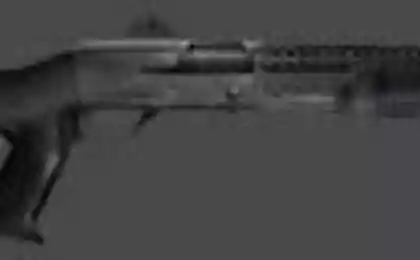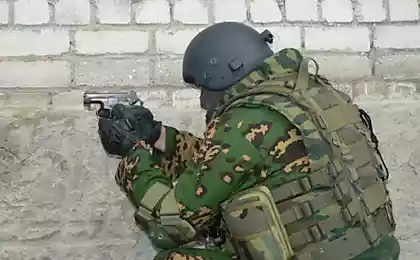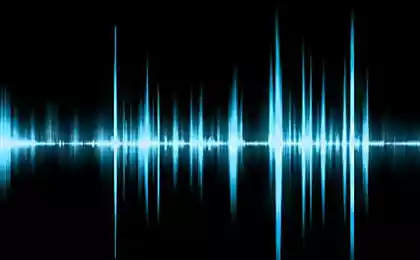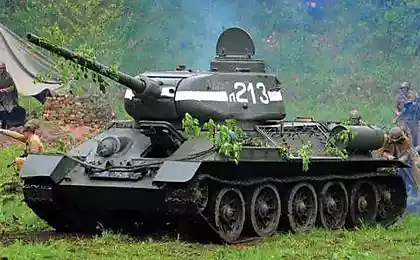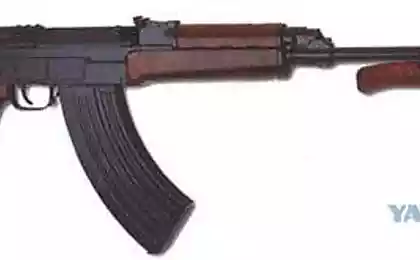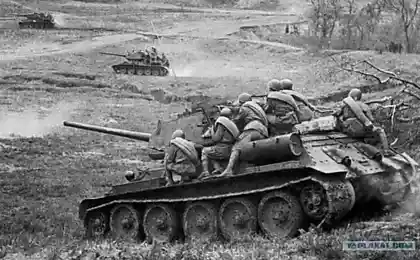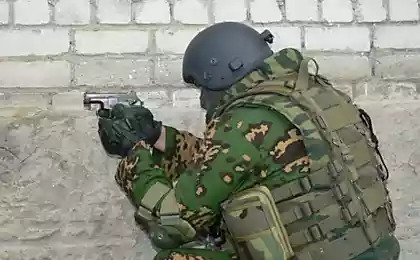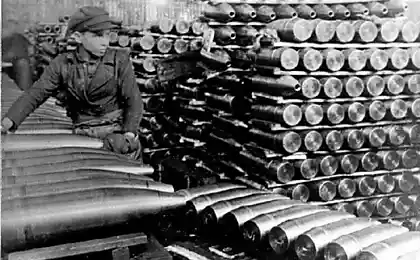1075
Echoes of War - II (Soviet weapons)
PCA-41 (submachine gun design Shpagin) was created in 1941 to replace expensive in the production machine pistol Degtyareva PDP-40. In the same year adopted by the Red Army. PCA-41 is a simple and cheap to manufacture weapons of war, and was produced in large quantities - only during the war, was released about 5 or 6 million pieces of PCA-41. Soon after the war, the PCA-41 was withdrawn from the Soviet Army, but it is widely exported to the pro-Soviet-minded developing countries, and in Africa it could be seen even in the 1980s gody.
Weight: * 3, 6 kg empty
charged, with a disk store 5, 3 kg,
charged with carob (box-shaped) Shop 4, 15 kg.
Length: 843 mm
Barrel length: 269 mm
Cartridge: 7, 62 x 25 mm TT
Caliber: 7, 62 mm
Movement: Giving free shutter
Rate of fire, rounds / min: 900 rounds per minute
Muzzle velocity, m / s: 490 m / s
Effective range: 200-300 m
Type of ammunition: Store the box - 35 cartridges,
Disk - 71 cartridge
Sight: an unregulated, open, 100 m, with a folding stand for 200
www.otvaga.ucoz.ru/publ/5-1-0-38 - Here you can learn more about the structure of the PCA-41.
Technically, the PCA is an automatic weapon that works on the principle of free shutter. Fires from the rear sears (with open shutter). Drummer fixedly mounted on the mirror shutter. Switch fire mode (single / automatic) located within the trigger guard, before the trigger guard is designed as a slider in the handle cocking and locks the bolt in the front or rear position. The bolt box and barrel shroud - stamped steel, the front part of the casing barrel protruding over the muzzle and serves as a muzzle brake-compensator. The stock of wood, usually birch.
Sights include the original sector sight and fixed front sight, later - the rocker-shaped pillar L-units with 100 and 200 meters. Early PCA completed with drum magazine 71 cartridge from the PDP-40, but the drum shops were complex and expensive to manufacture, not too reliable and easy to use, and require an individual fit under the arms, so in 1942, were designed carob (box-type) stores 35 cartridges.
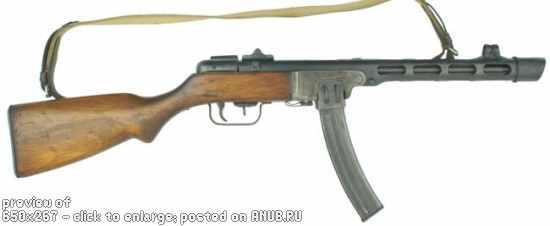
The history of the PCA-41.
PCA was created as a replacement PDP-34/40. The main objective in the development of this weapon was the creation of the sample close to the DPP or his superior performance characteristics, but it is cheap and suitable for mass production, including non-core businesses. In 1940 the People's Commissariat of weapons made a request to create gunsmiths submachine gun, part of which could be made with minimal machining, (which means in practice is necessary to apply pressed parts). This PP had to be done as easy to produce, which, if necessary, its release could quickly start any engineering enterprise. By the autumn of 1940 construction submachine guns were presented to the designers of GS and BG Shpagin Shpitalnaya. Field testing and technological evaluation of the samples presented for consideration at the end of November 1940 showed that at the close fighting qualities of both projects submachine pulёmet Shpagin was much more technological in production. For the production of the necessary parts required 87 5 6 machine-hours, at the same time for the production of 95 parts PP BG Shpitalniy required 25, 3 machine-hours that is almost five times bolshe.
PCA-41, partially disassembled.

Sailors from the SCB-41.
Characteristics of the PCA-41.
When declared sighting distance of 500 m real effective range of fire of about 200 meters - a figure common to this class of weapon. In this case, however, by using 7.62 cartridge CT, unlike 9 mm Parabellum .45 or RSA (used in foreign PP) was achieved significantly greater bullet muzzle velocity (490 m / s vs. 380 m / s in the MP-40) that gave the best flat trajectory, allowing confidence to hit the target at 200 meters and fire at a greater distance, offsetting the decrease in the accuracy rate of more. The high rate of fire, on the one hand, leads to a high consumption of ammunition (for which the machine was nicknamed "eater cartridges"), a rapid overheating of the trunk, and then the PCA started "spitting" on the other - provides a high density of fire, which gives an advantage in melee .
The persistence of the PCA, in particular with the open-end store, very high. Clean and lubricate the PCA is a reliable weapon. Stationary designated striker is causing delays in the shooting dirty cups shutter soot or dust gets on the thickened grease, according to the memoirs of veterans of World War II when traveling in open vehicles or armor on muddy roads PCA is almost always hidden under the cape. The disadvantage is the large size and weight difficulty replacing and equipment storage store enough reliable fuse and the possibility of spontaneous firing if dropped on a hard surface, which often leads to accidents, low vitality possessed a fiber absorber, softens the blow valve at the receiver in the rear position, after wear damper valve broke back of the box. The advantages of the PCA may also include a large capacity disk stores (71 cartridge) compared with MP-40 (32 rounds), but a large number of cartridges significantly increased weight and size oruzhiya.
Production of PCA continued throughout World War II. In 1942, proposed a new modification - PCA-42, somewhat altered form but in the competition won by the PPP-43, which was, along with the PCA-41, adopted by.

PPS-43 (PPS submachine gun) - submachine gun, developed by Soviet designers Alexei Sudaevym in 1942. It was used by Soviet troops during World War II. It is often called the best submachine gun World War II.

Weight: 3, 67 kg loaded, 3, 04 kg empty
Length (stock closed / expanded): 615/820 mm
Barrel length: 272 mm
Cartridge: 7, 62 x 25 mm TT
Caliber: 7, 62 mm
Movement: Giving free shutter
Rate of fire, rounds / min: 700 rounds per minute
Muzzle velocity, m / s: 500
Effective range: 200 m
Type of ammunition: Shop 35 rounds
PPP is often called the best submachine gun World War II. For good reason. It offers the convenience, high enough for the submachine gun combat capabilities, high reliability, compactness. This PPP is very manufacturable, easy and inexpensive to produce, which was especially important in the conditions of severe, protracted war, a constant lack of material and labor resources. However, there are cases of failures of the Red Army soldiers from the PPP in favor of PCA.
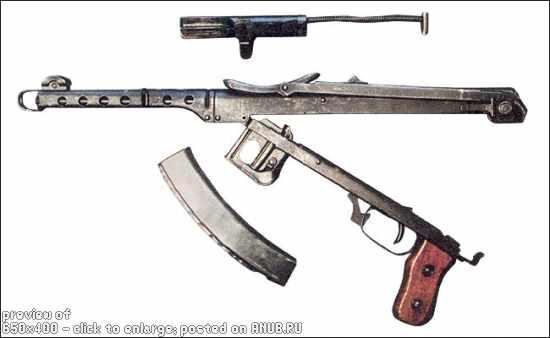
PPS-42. Partial disassembly.
Submachine gun PCA, for all its virtues, was too bulky and heavy for use in a space or narrow trenches for tank crews, reconnaissance, paratroopers, and so in 1942 the Red Army declared the requirements for a new PP, which was to be lighter and smaller than the PCA, as well as cheaper to manufacture.
In late 1942, after comparative tests on the weapons of the Red Army adopted a submachine gun design engineer Sudaeva under the designation PPS-42. Production of PPS-42, as well as its further modification of PPS-43 was established in the besieged city, and all the years of war had produced about half a million PPP both models. After the war, PPPs are widely exported pro-Soviet countries and the movement, as well as many copied abroad (including China, North Korea). PPS-43 is often called the best PP World War II.
Technically, the PPP is a weapon, built by the scheme with a free gate and shoot from the rear sears (with open shutter). Mode of fire - only the automatic. The fuse is formed in front of the trigger guard and blocked release rod. The receiver is stamped from steel integral with the barrel housing. To disassemble the receiver "break in two" forward and down along the axis situated in front of the receiver store. PPP is equipped with a muzzle brake-compensator simple structure. Sights include the fixed front sight and a rear sight changeover, calculated at a range of 100 and 200 meters. Butt folding down is made of steel.
PPP used the box-shaped sector (carob) stores a capacity of 35 rounds, not interchangeable with shops on the PCA.
Development and application of PPP-43.
Is the Red Army PCA-41 turned out to be - mainly because of the very large size and weight - not enough useful in the conduct of combat in populated areas, in areas for reconnaissance, airborne and crew combat vehicles. In addition, under wartime conditions required to reduce the cost of mass production of submachine guns. In connection with this contest was announced for the development of a new submachine gun for the army. PPS submachine gun developed in 1942, won the competition and was put into service in late 1942 under the name of PPP-42. Modified design of next year under the name of PPS-43 (shortened barrel and butt, cocking lever to change, check the fuse and latch shoulder rest, barrel shroud and receiver are combined in one piece) was also put into service.
Designed PPP besieged Leningrad, based on a compilation of the project and the project machinery Lieutenant IK Bezruchko-Vysotsk (design speed and return systems). His production has been deployed there, on the Sestroretsk arms factory, initially - for the needs of the Leningrad Front. While in the besieged city on the road of life went to Leningrad food back out of the city were taken not only refugees, but also a new weapon.
In total, for the war it was released about 500 000 units of PPP both modifications. After the war, the USSR supported PPPs Distributed states and movements. Own production of PPP has been established in China, North Korea and some other countries. In the USSR, the PPP was withdrawn from service and no longer used in the early 1950s, after the transition army on a Kalashnikov.
Trophy PPP-43 were used in the German army designation MP719®. Unlike the PCA-41, captured items are not altered under the 9-mm cartridge "Parabellum", while in Finland, the factory Tikkakoski? under the brand m / 44 was performed under a modified 9-mm cartridge "Luger / Parabellum," a copy of the PPP-43.Primenyalas only in the Suez crisis of 1957-1958 years of Finnish peacekeepers. Such submachine guns were produced 10,000 pieces. After the war, PPPs produced under license in small batches in West Germany, and Spain (model DUX 53). Just on the basis of PPP-43 in Poland developed a model wz / 1943/52 with a wooden butt. Alternatively, a copy of the license under the designation "Tip54" made in China.
This is my second piece of news, I hope like if you want to continue the theme of Soviet weapons.

Weight: * 3, 6 kg empty
charged, with a disk store 5, 3 kg,
charged with carob (box-shaped) Shop 4, 15 kg.
Length: 843 mm
Barrel length: 269 mm
Cartridge: 7, 62 x 25 mm TT
Caliber: 7, 62 mm
Movement: Giving free shutter
Rate of fire, rounds / min: 900 rounds per minute
Muzzle velocity, m / s: 490 m / s
Effective range: 200-300 m
Type of ammunition: Store the box - 35 cartridges,
Disk - 71 cartridge
Sight: an unregulated, open, 100 m, with a folding stand for 200
www.otvaga.ucoz.ru/publ/5-1-0-38 - Here you can learn more about the structure of the PCA-41.
Technically, the PCA is an automatic weapon that works on the principle of free shutter. Fires from the rear sears (with open shutter). Drummer fixedly mounted on the mirror shutter. Switch fire mode (single / automatic) located within the trigger guard, before the trigger guard is designed as a slider in the handle cocking and locks the bolt in the front or rear position. The bolt box and barrel shroud - stamped steel, the front part of the casing barrel protruding over the muzzle and serves as a muzzle brake-compensator. The stock of wood, usually birch.
Sights include the original sector sight and fixed front sight, later - the rocker-shaped pillar L-units with 100 and 200 meters. Early PCA completed with drum magazine 71 cartridge from the PDP-40, but the drum shops were complex and expensive to manufacture, not too reliable and easy to use, and require an individual fit under the arms, so in 1942, were designed carob (box-type) stores 35 cartridges.

The history of the PCA-41.
PCA was created as a replacement PDP-34/40. The main objective in the development of this weapon was the creation of the sample close to the DPP or his superior performance characteristics, but it is cheap and suitable for mass production, including non-core businesses. In 1940 the People's Commissariat of weapons made a request to create gunsmiths submachine gun, part of which could be made with minimal machining, (which means in practice is necessary to apply pressed parts). This PP had to be done as easy to produce, which, if necessary, its release could quickly start any engineering enterprise. By the autumn of 1940 construction submachine guns were presented to the designers of GS and BG Shpagin Shpitalnaya. Field testing and technological evaluation of the samples presented for consideration at the end of November 1940 showed that at the close fighting qualities of both projects submachine pulёmet Shpagin was much more technological in production. For the production of the necessary parts required 87 5 6 machine-hours, at the same time for the production of 95 parts PP BG Shpitalniy required 25, 3 machine-hours that is almost five times bolshe.

PCA-41, partially disassembled.

Sailors from the SCB-41.
Characteristics of the PCA-41.
When declared sighting distance of 500 m real effective range of fire of about 200 meters - a figure common to this class of weapon. In this case, however, by using 7.62 cartridge CT, unlike 9 mm Parabellum .45 or RSA (used in foreign PP) was achieved significantly greater bullet muzzle velocity (490 m / s vs. 380 m / s in the MP-40) that gave the best flat trajectory, allowing confidence to hit the target at 200 meters and fire at a greater distance, offsetting the decrease in the accuracy rate of more. The high rate of fire, on the one hand, leads to a high consumption of ammunition (for which the machine was nicknamed "eater cartridges"), a rapid overheating of the trunk, and then the PCA started "spitting" on the other - provides a high density of fire, which gives an advantage in melee .
The persistence of the PCA, in particular with the open-end store, very high. Clean and lubricate the PCA is a reliable weapon. Stationary designated striker is causing delays in the shooting dirty cups shutter soot or dust gets on the thickened grease, according to the memoirs of veterans of World War II when traveling in open vehicles or armor on muddy roads PCA is almost always hidden under the cape. The disadvantage is the large size and weight difficulty replacing and equipment storage store enough reliable fuse and the possibility of spontaneous firing if dropped on a hard surface, which often leads to accidents, low vitality possessed a fiber absorber, softens the blow valve at the receiver in the rear position, after wear damper valve broke back of the box. The advantages of the PCA may also include a large capacity disk stores (71 cartridge) compared with MP-40 (32 rounds), but a large number of cartridges significantly increased weight and size oruzhiya.

Production of PCA continued throughout World War II. In 1942, proposed a new modification - PCA-42, somewhat altered form but in the competition won by the PPP-43, which was, along with the PCA-41, adopted by.

PPS-43 (PPS submachine gun) - submachine gun, developed by Soviet designers Alexei Sudaevym in 1942. It was used by Soviet troops during World War II. It is often called the best submachine gun World War II.

Weight: 3, 67 kg loaded, 3, 04 kg empty
Length (stock closed / expanded): 615/820 mm
Barrel length: 272 mm
Cartridge: 7, 62 x 25 mm TT
Caliber: 7, 62 mm
Movement: Giving free shutter
Rate of fire, rounds / min: 700 rounds per minute
Muzzle velocity, m / s: 500
Effective range: 200 m
Type of ammunition: Shop 35 rounds
PPP is often called the best submachine gun World War II. For good reason. It offers the convenience, high enough for the submachine gun combat capabilities, high reliability, compactness. This PPP is very manufacturable, easy and inexpensive to produce, which was especially important in the conditions of severe, protracted war, a constant lack of material and labor resources. However, there are cases of failures of the Red Army soldiers from the PPP in favor of PCA.

PPS-42. Partial disassembly.
Submachine gun PCA, for all its virtues, was too bulky and heavy for use in a space or narrow trenches for tank crews, reconnaissance, paratroopers, and so in 1942 the Red Army declared the requirements for a new PP, which was to be lighter and smaller than the PCA, as well as cheaper to manufacture.
In late 1942, after comparative tests on the weapons of the Red Army adopted a submachine gun design engineer Sudaeva under the designation PPS-42. Production of PPS-42, as well as its further modification of PPS-43 was established in the besieged city, and all the years of war had produced about half a million PPP both models. After the war, PPPs are widely exported pro-Soviet countries and the movement, as well as many copied abroad (including China, North Korea). PPS-43 is often called the best PP World War II.
Technically, the PPP is a weapon, built by the scheme with a free gate and shoot from the rear sears (with open shutter). Mode of fire - only the automatic. The fuse is formed in front of the trigger guard and blocked release rod. The receiver is stamped from steel integral with the barrel housing. To disassemble the receiver "break in two" forward and down along the axis situated in front of the receiver store. PPP is equipped with a muzzle brake-compensator simple structure. Sights include the fixed front sight and a rear sight changeover, calculated at a range of 100 and 200 meters. Butt folding down is made of steel.
PPP used the box-shaped sector (carob) stores a capacity of 35 rounds, not interchangeable with shops on the PCA.
Development and application of PPP-43.
Is the Red Army PCA-41 turned out to be - mainly because of the very large size and weight - not enough useful in the conduct of combat in populated areas, in areas for reconnaissance, airborne and crew combat vehicles. In addition, under wartime conditions required to reduce the cost of mass production of submachine guns. In connection with this contest was announced for the development of a new submachine gun for the army. PPS submachine gun developed in 1942, won the competition and was put into service in late 1942 under the name of PPP-42. Modified design of next year under the name of PPS-43 (shortened barrel and butt, cocking lever to change, check the fuse and latch shoulder rest, barrel shroud and receiver are combined in one piece) was also put into service.
Designed PPP besieged Leningrad, based on a compilation of the project and the project machinery Lieutenant IK Bezruchko-Vysotsk (design speed and return systems). His production has been deployed there, on the Sestroretsk arms factory, initially - for the needs of the Leningrad Front. While in the besieged city on the road of life went to Leningrad food back out of the city were taken not only refugees, but also a new weapon.
In total, for the war it was released about 500 000 units of PPP both modifications. After the war, the USSR supported PPPs Distributed states and movements. Own production of PPP has been established in China, North Korea and some other countries. In the USSR, the PPP was withdrawn from service and no longer used in the early 1950s, after the transition army on a Kalashnikov.
Trophy PPP-43 were used in the German army designation MP719®. Unlike the PCA-41, captured items are not altered under the 9-mm cartridge "Parabellum", while in Finland, the factory Tikkakoski? under the brand m / 44 was performed under a modified 9-mm cartridge "Luger / Parabellum," a copy of the PPP-43.Primenyalas only in the Suez crisis of 1957-1958 years of Finnish peacekeepers. Such submachine guns were produced 10,000 pieces. After the war, PPPs produced under license in small batches in West Germany, and Spain (model DUX 53). Just on the basis of PPP-43 in Poland developed a model wz / 1943/52 with a wooden butt. Alternatively, a copy of the license under the designation "Tip54" made in China.
This is my second piece of news, I hope like if you want to continue the theme of Soviet weapons.



